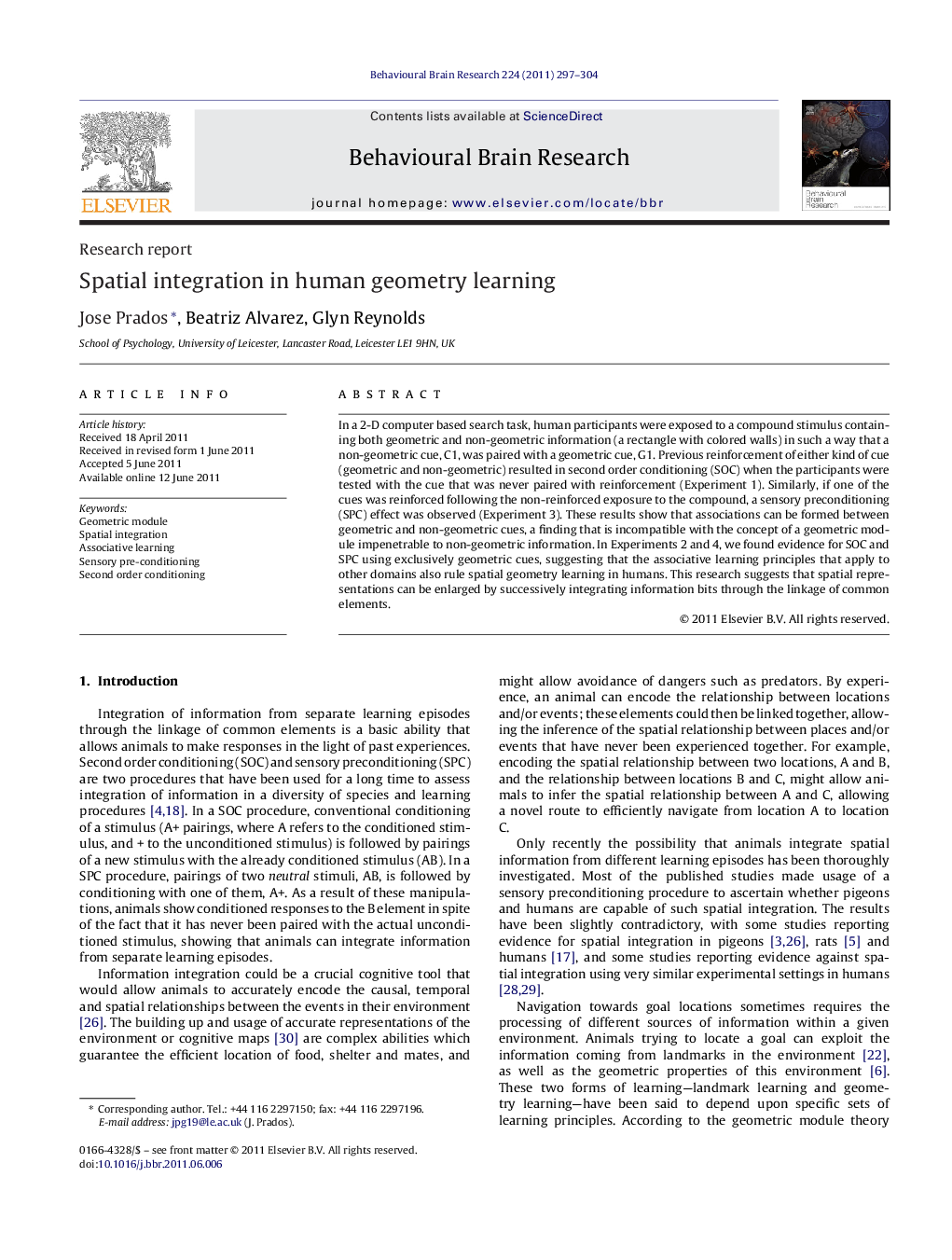| Article ID | Journal | Published Year | Pages | File Type |
|---|---|---|---|---|
| 4313649 | Behavioural Brain Research | 2011 | 8 Pages |
In a 2-D computer based search task, human participants were exposed to a compound stimulus containing both geometric and non-geometric information (a rectangle with colored walls) in such a way that a non-geometric cue, C1, was paired with a geometric cue, G1. Previous reinforcement of either kind of cue (geometric and non-geometric) resulted in second order conditioning (SOC) when the participants were tested with the cue that was never paired with reinforcement (Experiment 1). Similarly, if one of the cues was reinforced following the non-reinforced exposure to the compound, a sensory preconditioning (SPC) effect was observed (Experiment 3). These results show that associations can be formed between geometric and non-geometric cues, a finding that is incompatible with the concept of a geometric module impenetrable to non-geometric information. In Experiments 2 and 4, we found evidence for SOC and SPC using exclusively geometric cues, suggesting that the associative learning principles that apply to other domains also rule spatial geometry learning in humans. This research suggests that spatial representations can be enlarged by successively integrating information bits through the linkage of common elements.
► Spatial integration is demonstrated by using second order conditioning (SOC) and sensory preconditioning (SPC) in humans. ► The results show integration of geometric and non-geometric cues and spatial integration within the geometry domain. ► The mechanisms underlying spatial integration and their relevance for cognitive maps acquisition and usage are discussed.
